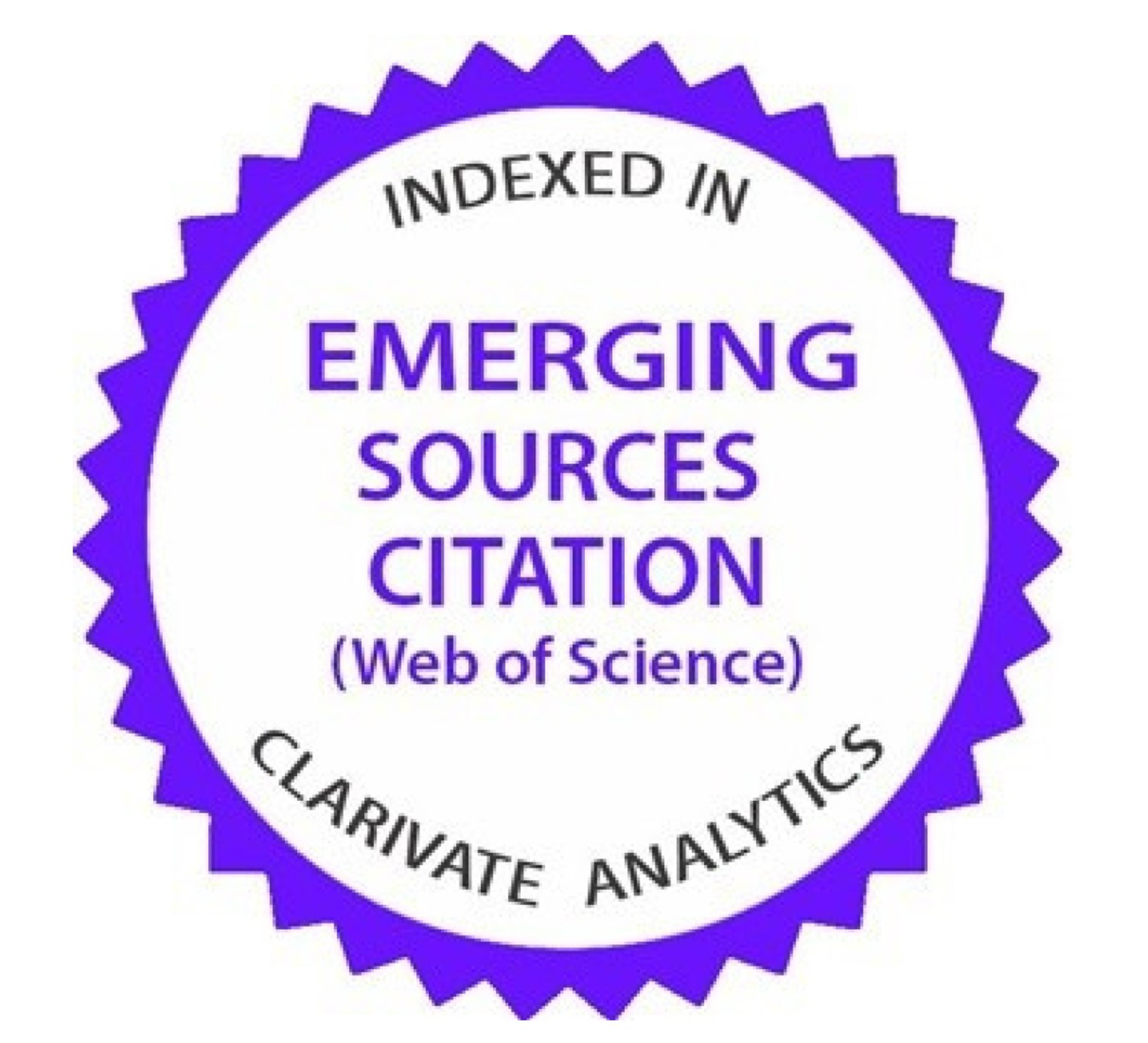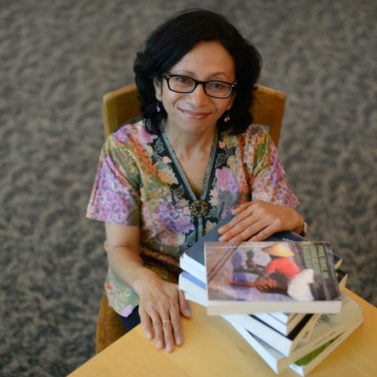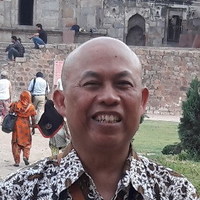Liberal or lost? How political education and social media shape the ideological maze of students
Downloads
The ideological orientation and political attitudes of students are influenced by formal political education and exposure to social media; however, the interaction between these two factors in shaping ideological coherence, flexibility, and complexity remains underexplored. This study employs Patrick H. O’Neil’s theoretical framework to analyze the spectrum of political ideologies beyond the traditional left-right dichotomy. Using a descriptive comparative quantitative method, a survey involving 200 political science and non-political science students. The research reveals that political education does not always foster ideological consistency but rather enhances ideological diversity and flexibility. Political science students exhibit moderate ideological diversity, demonstrating openness to a broad spectrum of ideologies, including fascism and communism, particularly in discussions about corruption, the military, and political parties. However, this diversity does not correlate with a stronger inclination toward liberalism. In contrast, non-political science students display slightly higher ideological consistency, with a predominant leaning toward social democracy. While social media facilitates incidental exposure to political discourse, its role in driving ideological transformation appears limited. Furthermore, this study challenges the classic assumption that structured political education inherently promotes liberal attitudes, underscoring the need for an adaptive educational framework that accounts for the complexities of political engagement in the digital era.
Achen CH & Bartels LM (2016) Democracy for Realists: Why Elections Do Not Produce Responsive Government. Princeton: Princeton University Press.
Altbach PG (1984) Student politics in the Third World. Higher Education 13 (6):635-655. https://doi.org/10.1007/BF00137017.
Annas FB, Petranto HN, & Pramayoga AA (2019) Opini publik dalam polarisasi politik di media sosial. Jurnal PIKOM (Penelitian Komunikasi dan Pembangunan) 20 (2):111-122.
Ardi R & Pradiri AP (2021) Determinant factors of partisans’ confirmation bias in social media. HUMANITAS: Indonesian Psychological Journal 18 (1):1-13. https://doi.org/10.26555/humanitas.v18i1.19664.
Bailey M & Williams LR (2016) Are college students really liberal? An exploration of student political ideology and attitudes toward policies impacting minorities. Social Science Journal 53 (3):309-317. https://doi.org/10.1016/j.soscij.2016.04.002.
Bennett WL & Iyengar S (2008) A new era of minimal effects? The changing foundations of political communication. Journal of Communication 58 (4):707-731. https://doi.org/10.1111/j.14602466.2008.00410.x.
Blasko Z, Costa P, & Vera-Toscano E (2018) Civic attitudes and behavioural intentions among 14 year olds: How can education make a difference toward a more democratic and cohesive Europe? IDEAS Working Paper Series from RePEc. Joint Research Centre (Seville site).
Brown R (2024) Navigating the Political Maze: A Handbook for Political Dummies. London: Independently Published.
Converse PE (1964) The nature of belief systems in mass publics. In: Apter DE (ed). Ideology and Discontent. New York: Free Press. 206-261.
Conway III LG, Houck SC, Gornick LJ, & Repke MA (2016) Ideologically motivated perceptions of complexity: Believing those who agree with you are more complex than they are. Journal of Language and Social Psychology 35 (6):708-718. https://doi.org/10.1177/0261927X16634370.
Dalton RJ (2013) The Apartisan American: Dealignment and Changing Electoral Politics. Washington, DC: CQ Press.
Demel S, Barr A, Miller L, & Ubeda P (2019) Commitment to political ideology is a luxury only students can afford: A distributive justice experiment. Journal of Experimental Political Science 6 (1). https://doi.org/10.1017/XPS.2018.14.
Fathurochman NY & Tutiasri RP (2023) Penerimaan generasi Z terhadap polarisasi politik. JIIP-Jurnal Ilmiah Ilmu Pendidikan 6 (9):6837-6845. https://doi.org/10.54371/jiip.v6i9.2833.
Galston WA (2001) Political knowledge, political engagement, and civic education. Annual Review of Political Science 4: 217-234. https://doi.org/10.1146/annurev.polisci.4.1.217.
Gong M & Zuo L (2020) Research on college students’ ideological and political education in the new media era. Creative Education 11 (06). https://doi.org/10.4236/ce.2020.116063.
Gupta S & Rani S (2023) Role of political socialization of higher education. International Journal of Advanced Research in Science, Communication and Technology (IJARSCT) 3 (3):748-751. https://doi.org/10.48175/568.
Gutmann A & Thompson D (2004) Why Deliberative Democracy? New Jersey: Princeton University Press.
Hanson JM, Weeden DD, Pascarella ET, & Blaich C (2012) Do liberal arts colleges make students more liberal? Some initial evidence. Higher Education 64 (3). https://doi.org/10.1007/s10734-011-9498-8.
He X, Dong X, Liu L, & Zou Y (2021) Challenges of college students’ ideological and political and psychological education in the information age. Frontiers in Psychology 12. https://doi.org/10.3389/fpsyg.2021.707973.
Hutchens MJ, Eveland Jr-WP & Morey AC (2019) Political discussion network heterogeneity and ideological reasoning. Political Communication 36 (2):203-220.
Inglehart R (1997) Modernization and Postmodernization: Cultural, Economic, and Political Change in 43 Societies. Princeton: Princeton University Press.
Iyengar S & Hahn KS (2009) Red media, blue media: Evidence of ideological selectivity in media use. Journal of communication 59 (1):19-39. https://doi.org/10.1111/j.1460-2466.2008.01402.x.
Juwandi R, Nurwahid Y, & Lestari A (2019) Media sosial sebagai sarana pendidikan politik untuk mengembangkan literasi digital warga negara. In: Prosiding Seminar Nasional Pendidikan FKIP 2: 369-378.
Kaftan J & Linantud J (2021) Ideologies and competition: Student reflections on their statecraft experience. Journal of Political Science Education 17 (S1). https://doi.org/10.1080/15512169.2020.1777145.
Khammatova RS, Gribkova OV, Tkhugo MM, Ushakova OB, Shchetinina NN, Krasheninnikova EI, & Erofeeva MA (2021) Specific features of value orientations among the student youth in the context of digital transformation of the education system. World Journal on Educational Technology: Current Issues 13 (2):297-306. https://doi.org/10.18844/wjet.v13i2.5714.
Li L & Kang K (2023) Ethnic minority group college students’ liberal and conservative attitudes to online start-ups: Regional difference perspective. Journal of Entrepreneurship in Emerging Economies 16 (6):1533-1554. https://doi.org/10.1108/JEEE-02-2023-0035.
Lodge M & Taber CS (2013) The Rationalizing Voter. Cambridge: Cambridge University Press.
Luescher TM (2015) Theorising student activism in and beyond the 20th century: The contribution of Philip G. Altbach. In: Student Engagement in Europe: Society, Higher Education and Student Governance.
Mason L (2018) Uncivil Agreement: How Politics Became Our Identity. Chicago: University of Chicago Press.
McGraw KM & Dolan K (2007) Ambivalence and the structure of political attitudes. In: The Affect Effect. Chicago: University of Chicago Press. 135-158.
Mintz E (1998) The effects of university education on the political attitudes of young adults. Canadian Journal of Higher Education 28 (1). https://doi.org/10.47678/cjhe.v28i1.183310.
Mutz DC (2002) Cross-cutting social networks: Testing democratic theory in practice. American Political Science Review 96 (1):111-126. https://doi.org/10.1017/S0003055402004264.
Neufeld B (2020) Political liberalism, autonomy, and education. In: The Palgrave Handbook of Citizenship and Education. 35-51.
O’Neil PH (2018) Essentials of Comparative Politics. 6th ed. New York: WW Norton & Company, Inc.
Prasetyo KB, Putri NA, & Pramono D (2022) Pendidikan politik generasi muda melalui gerakan voluntarisme komunitas milenial. Bookchapter Pendidikan Universitas Negeri Semarang (3):1-29. https://proceedings.unnes.ac.id/index.php/kp/article/view/48.
Ringstad R (2014) Political diversity among social work students. Journal of Social Work Values & Ethics 11 (2):13-22.
Rosta M & Tóth L (2021) Is there a demand for autocracies in Europe? Comparing the attitudes of Hungarian and Italian university students toward liberal democratic values inspired by János Kornai. Public Choice 187 (1-2):217-233. https://doi.org/10.1007/s11127-021-00877-y.
Rui Z (2022) Research on evaluation system of ideological and political education of college students based on decision system. Soft Computing 26 (20). https://doi.org/10.1007/s00500-022-07003-0.
Simanjuntak GP (2021) Echo chambers dan polarisasi politik di media sosial: Studi analisis fenomena hashtag (#) oleh pendukung capres-cawapres di Twitter dalam kontestasi politik tahun 2019. Dissertation, Universitas Sumatera Utara, Medan.
Sosiawan EA & Wibowo R (2020) Kontestasi berita hoax Pemilu Presiden tahun 2019 di media daring dan media sosial. Jurnal Ilmu Komunikasi 17 (2):133-142.
Stenner K (2005) The Authoritarian Dynamic. Cambridge: Cambridge University Press.
Strother L, Piston S, Golberstein E, Gollust SE, & Eisenberg D (2021) College roommates have a modest but significant influence on each other’s political ideology. Proceedings of the National Academy of Sciences of the United States of America 118 (2): e2015514117. https://doi.org/10.1073/pnas.2015514117.
Syaharani AR (2023) Education and the liberalism perspective. Journal of Innovation in Teaching and Instructional Media 3 (3):149-157. https://doi.org/10.52690/jitim.v3i3.718.
Tolchah M (2008) Liberalisme dan Nilai Tradisional: Tinjauan Kritis Atas Pergulatan Gagasan. Yogyakarta: Pustaka Pelajar.
Tucker JA, Guess A, Barberá P, Vaccari C, Siegel A, Sanovich S, Stukal D, & Nyhan B (2018) Social media, political polarization, and political disinformation: A review of the scientific literature. SSRN. https://ssrn.com/abstract=3144139.
Wang H (2019) The effect of political ideology on Chinese college students’ attitudes towards foreign and domestic affairs. China: An International Journal 17 (3). https://doi.org/10.1353/chn.2019.0031.
Whitsitt L & Williams RL (2019) Political ideology and accuracy of information. Innovative Higher Education 44 (6). https://doi.org/10.1007/s10755-019-09478-6.
Willeck C & Mendelberg T (2022) Education and political participation. Annual Review of Political Science 25 (1):89-110. https://doi.org/10.1146/annurev-polisci-051120-014235.
Wulandari CD, Muqsith MA, & Ayuningtyas F (2023) Fenomena buzzer di media sosial jelang pemilu 2024 dalam perspektif komunikasi politik. Avant Garde 11 (1):134-147.
Yu L & Qi W (2024) Assessing the effectiveness of ideological and political education based on big data. In: 7th International Conference on Humanities Education and Social Sciences (ICHESS 2024). Atlantis Press. 93-101.
Yuan L (2023) Research and practice of ideological and political education in the course of data mining and analysis. SHS Web of Conferences 171. https://doi.org/10.1051/shsconf/202317102025.
Zaller J (1992) The Nature and Origins of Mass Opinion. Cambridge: Cambridge University Press.
Zepke N (2015) What future for student engagement in neo-liberal times? Higher Education 69 (4):693704. https://doi.org/10.1007/s10734-014-9797-y.

This work is licensed under a Creative Commons Attribution-NonCommercial-ShareAlike 4.0 International License.
Copyright of this journal is possession of Editorial Board and Journal Manager, by the knowledge of the author, while the moral right of the publication belongs to the author.
The formal legal aspect of journal publication accessibility refers to Creative Commons Attribution-NonCommercial-ShareAlike (CC BY-NC-SA), implies that publication can be used for non-commercial purposes in its original form (cannot be modified).
Every publication (printed/electronic) are open access for educational purposes, research, and library. Other than the aims mentioned above, the editorial board is not responsible for copyright violation.
















